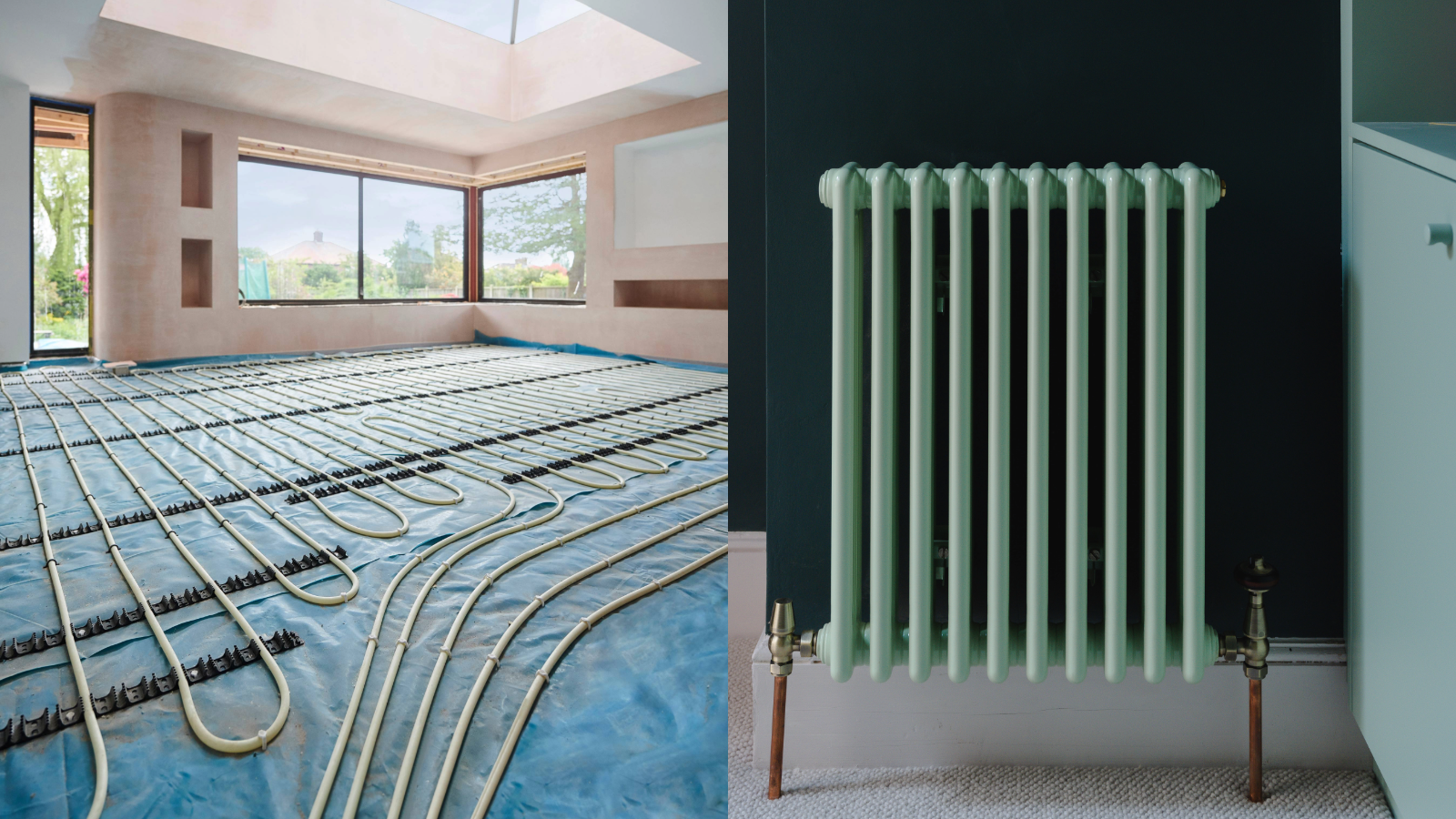Electric Underfloor Heating: Pros, Cons, Cost and More
Electric underfloor heating is more suitable for some renovations — here's everything you need to know
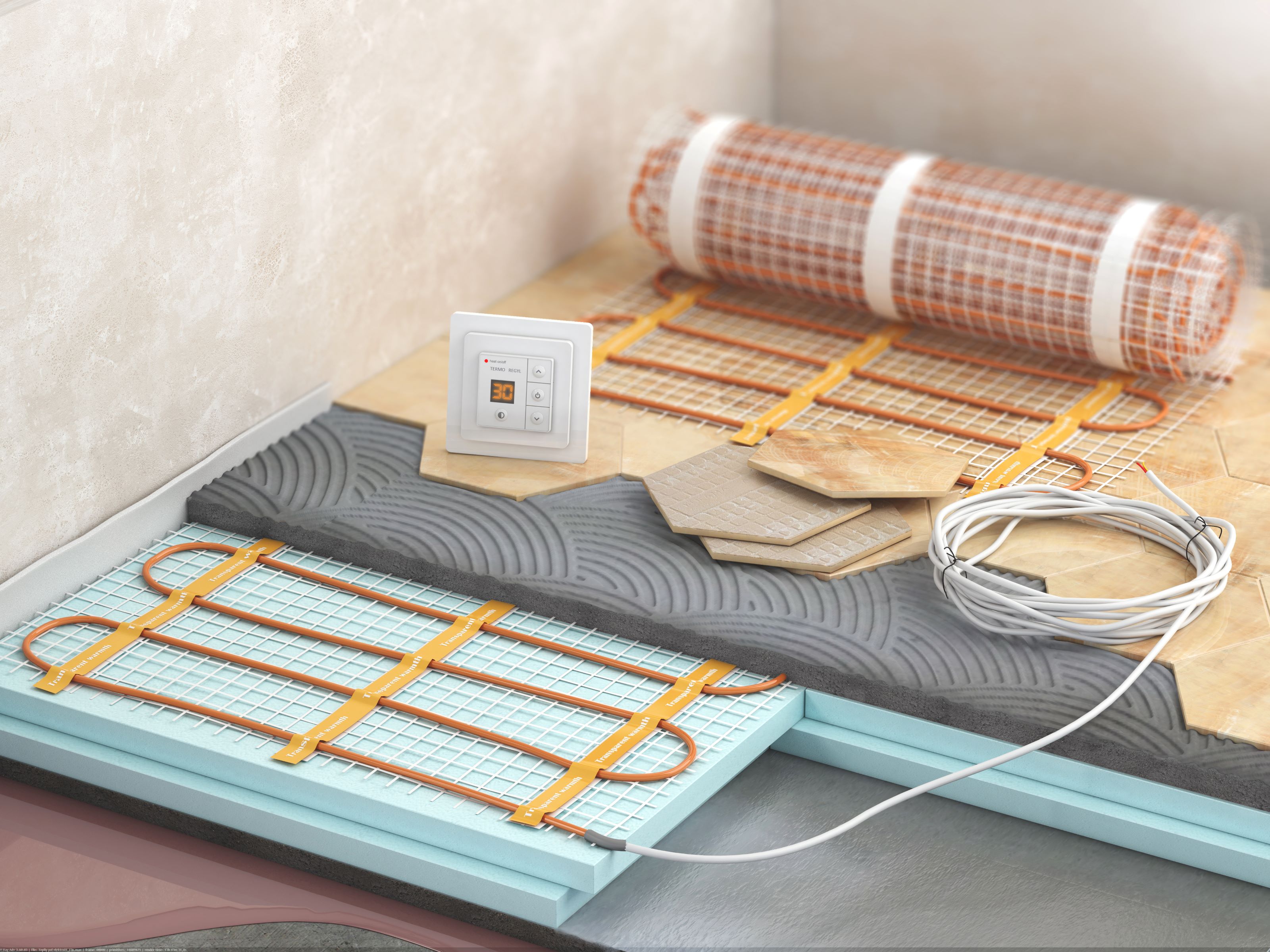
Electric underfloor heating can be a good option for heating your home, particularly if renovating an existing room.
It can be easier to install and is slimmer than traditional wet underfloor heating meaning you don't usually have to dig up your floor to lay it. This can save both time and money.
And while it's true electric underfloor heating has plenty of benefits, there are drawbacks that need to be considered before deciding which type of underfloor heating installation to use in your home. This will come down to the type of project and even the space where you plan to add underfloor heating.
Our in-depth guide looks at electric underfloor heating to help you decide whether it is suitable for your project.
Electric Underfloor Heating: How It Works
Electric underfloor heating warms an area using a thin heating wire placed under the surface of your floor. The wires heat up when switched on, radiating up through your floor surface to warm a room. The floor will feel warm underfoot too.
A separate underfloor heating thermostat is usually needed to control the temperature of the system either as a whole or in zones.
Where Does Electric Underfloor Heating Work Best?
The best places for electric underfloor heating tend to be in kitchens and bathrooms. These rooms typically have hard floors, which can feel cold underfoot especially with bare feet. Kitchens and bathrooms often have lots of fittings too, meaning space for additional radiators is limited.
Bring your dream home to life with expert advice, how to guides and design inspiration. Sign up for our newsletter and get two free tickets to a Homebuilding & Renovating Show near you.
It is possible to have electric underfloor heating with carpet but the carpet you need to lay a specific type of carpet for the heat to be able to radiate through effectively. Wooden flooring with underfloor heating is another option, but again there are some types of wood flooring that allow the heat to penetrate through better than others.
Comparing electric underfloor heating to wet, one of the benefits is electric is faster to heat. Therefore it can be switched on shortly before the room is used. With wet systems it takes far longer for the temperature to raise.
Devices such as timers, motion sensors, light relays and hot water sensors can be used to trigger the electric underfloor heating system to optimise its efficiency.
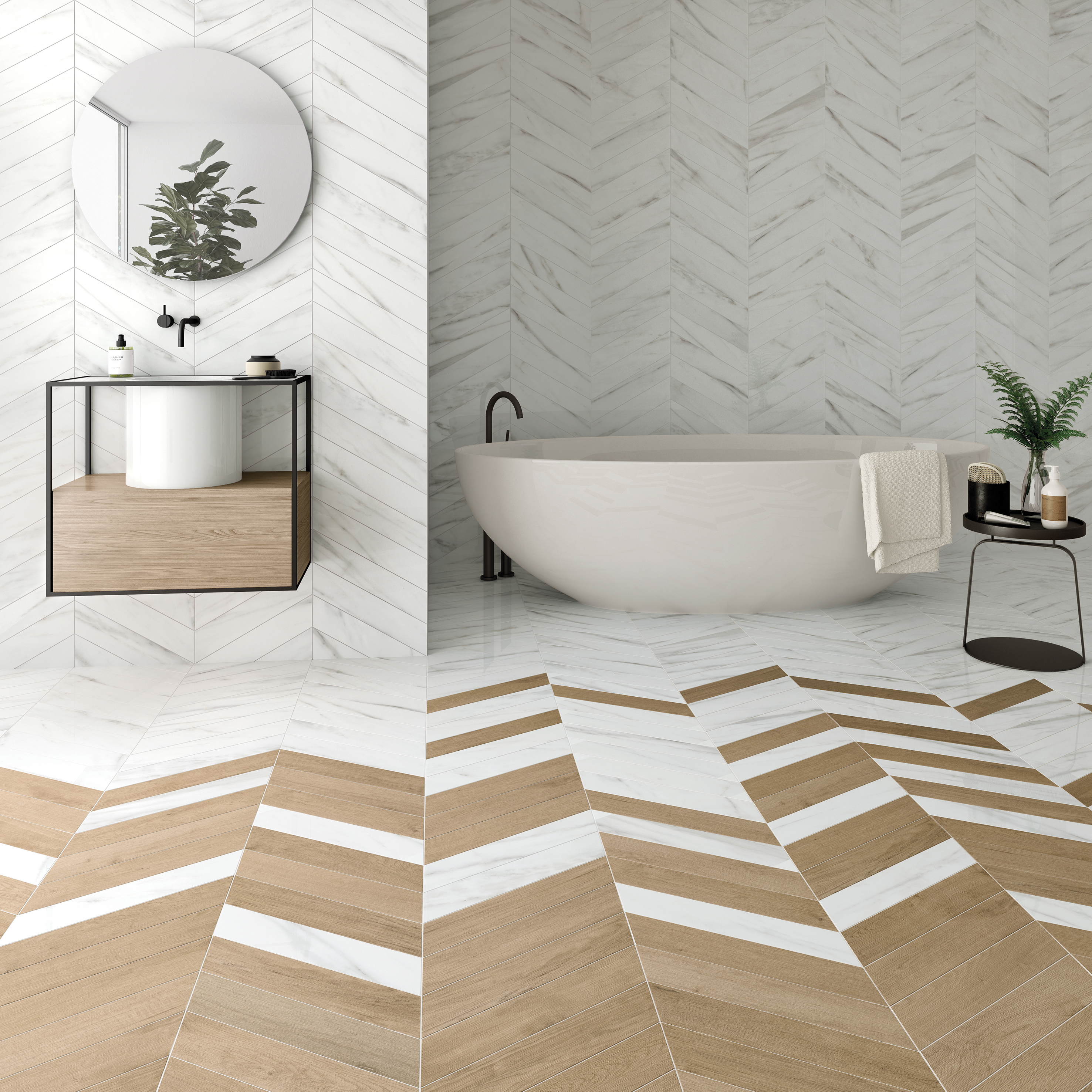
Pros of Electric Underfloor Heating
- Electric underfloor heating is much slimmer and typically takes up less space than a wet underfloor heating system. You are likely to need a backing board for insultation to limit heat loss downwards, but the wires are much thinner and the whole system can sit closer to the surface
- The system being closer to the surface also means it can be a lot quicker to react
- If you need a small amount of heat for a short period of time, such as in an ensuite bathroom, then this could be ideal
- There is no need for a manifold with electric underfloor heating. This means it is simple to lay it in one room without any disruption to adjoining spaces
Cons of Electric Underfloor Heating
- Electric underfloor heating can potentially create hot spots in a room where there is a second heat generator such as a range cooker or log burner, or perhaps if you have a south facing room that can benefit from solar gain
- Electric underfloor heating can also be expensive to run if it is not managed properly. Whatever amount of heat you are trying to put into your floor, if it is on for long periods of time the electric system will cost more to run
- If you only need short bursts of heat and you are not trying to heat up the fabric of the building then the electric solution could be the right option.
- In the event of a system failure such as a wire breaking it is very difficult to determine where the break is in order to do a repair. On a wet underfloor heating system you would see the leak and albeit that it may be a bit disruptive, it is possible to repair.
How Much Does Electric Underfloor Heating Cost?
There are many types of electric underfloor heating, all of which have different costs for systems and installation:
- Thin mesh systems: £45/m2 to £50/m2
- Quick matting system: £55/m2 to £60/m2
- Budget systems: £15/m2
- Foil systems suited under carpet: £40/m2 to £50/m2
- Loose wire system: £50/m2 to £55/m2
What Does Electric Underfloor Heating Cost to Run?
Electricity costs around 36p per unit right now and a unit is 1 kilowatt (kW) for one hour so it is referred to as a kilowatt per hour (kWh).
Therefore if your electric underfloor heating is 125W per square meter then for every eight square meters of floor you will use 36p per hour that the system is on.
But it is worth bearing in mind that the system is not on all day as the thermostat will only call for heat when it is required so it’s easy to keep control of your costs.

What is the Best Electric Underfloor Heating?
Electric underfloor heating comes in many different styles, here's what to choose, depending on your requirements.
Best Electric Underfloor Heating for Tiled Surfaces
Try a thin electric underfloor heating system which has wires that are attached to a thin mesh, the whole product is less than 2mm thick. The floor levels are not raised as the tile adhesive is then applied directly onto the mesh and the heater then effectively sits in the adhesive layer.
Best Electric Underfloor Heating for Fast Installation
A system with a matting can be used that decouples the tiles from the subfloor. The matting is laid on the floor and the wires are pushed into preformed cut-outs. The adhesive is then applied to the matting and as it is not applied directly to the subfloor potential future seasonal cracking risk is also mitigated.
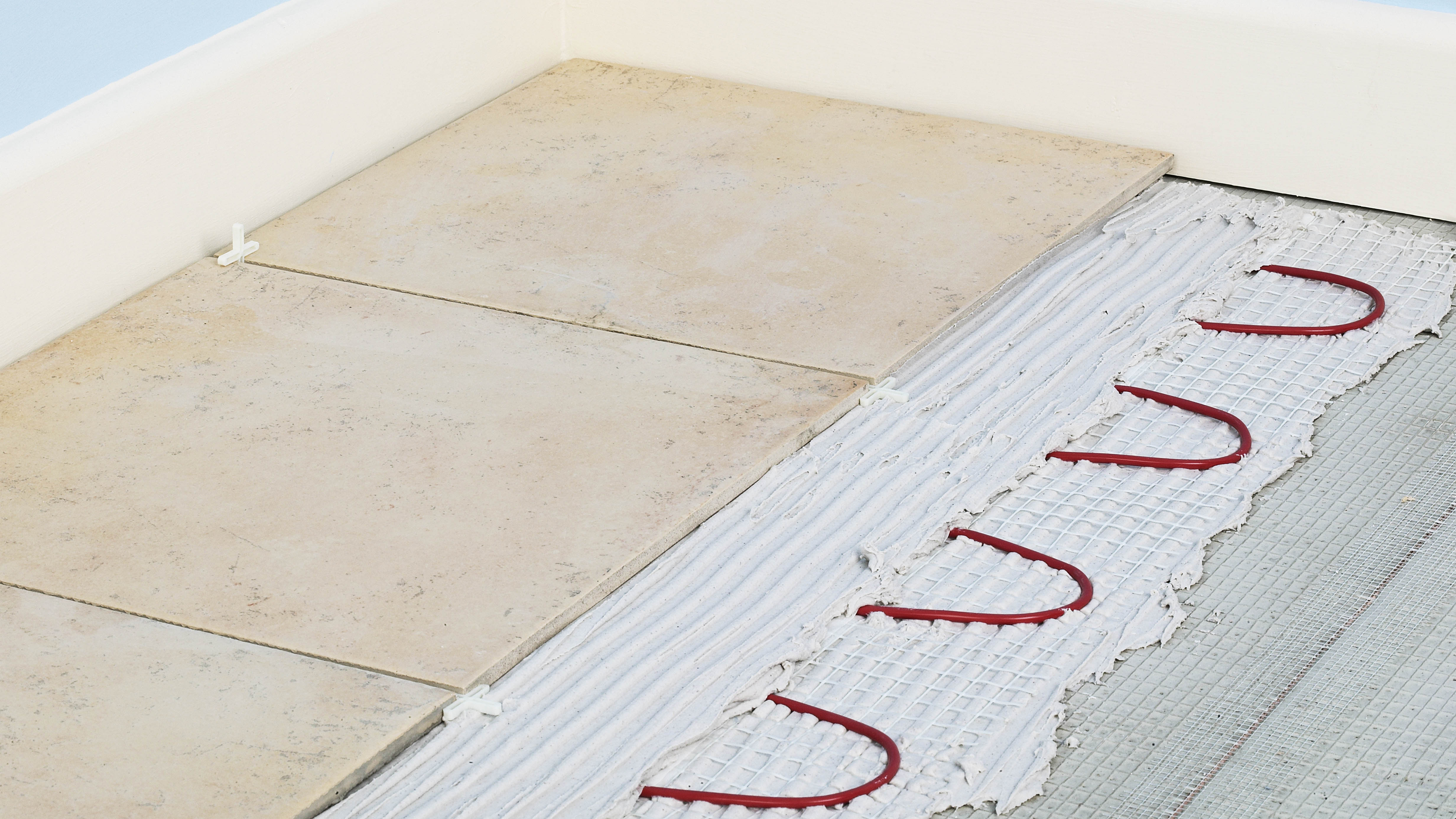
Best Electric Underfloor Heating on a Budget
The cheapest electric underfloor heating system is a cable that is bedded in a screed. This system has thicker wires and allows for floor finish changes without damaging the wires. The system is slow to react and should be designed for long-term space heating and not for quick task heating.
Best Electric Underfloor Heating for Finished Rooms
Soft finishes such as carpets, vinyl and laminate as well as other floating floors can sometimes be a challenge and foil type systems are designed for this scenario. There is no requirement for a screed with this type of solution.
Best Electric Underfloor Heating for Irregular Rooms
If the room has irregular shapes or permanent fixtures then a loose wire system is ideal. The heater is a durable flexible cable that is stuck to the backing boards and is embedded in the levelling compound or adhesive. Installation is a bit more detailed but the product allows for a lot more design layout variation.
Should I Leave Electric Underfloor Heating On?
Electric underfloor heating is mostly left on all the time but will not be actually active all the time as the thermostatic controller will manage the times that heat is required as well as the amount of heat that is required.
You can also put timers on the system so that the controller does not call for heat when the room is not going to be occupied.
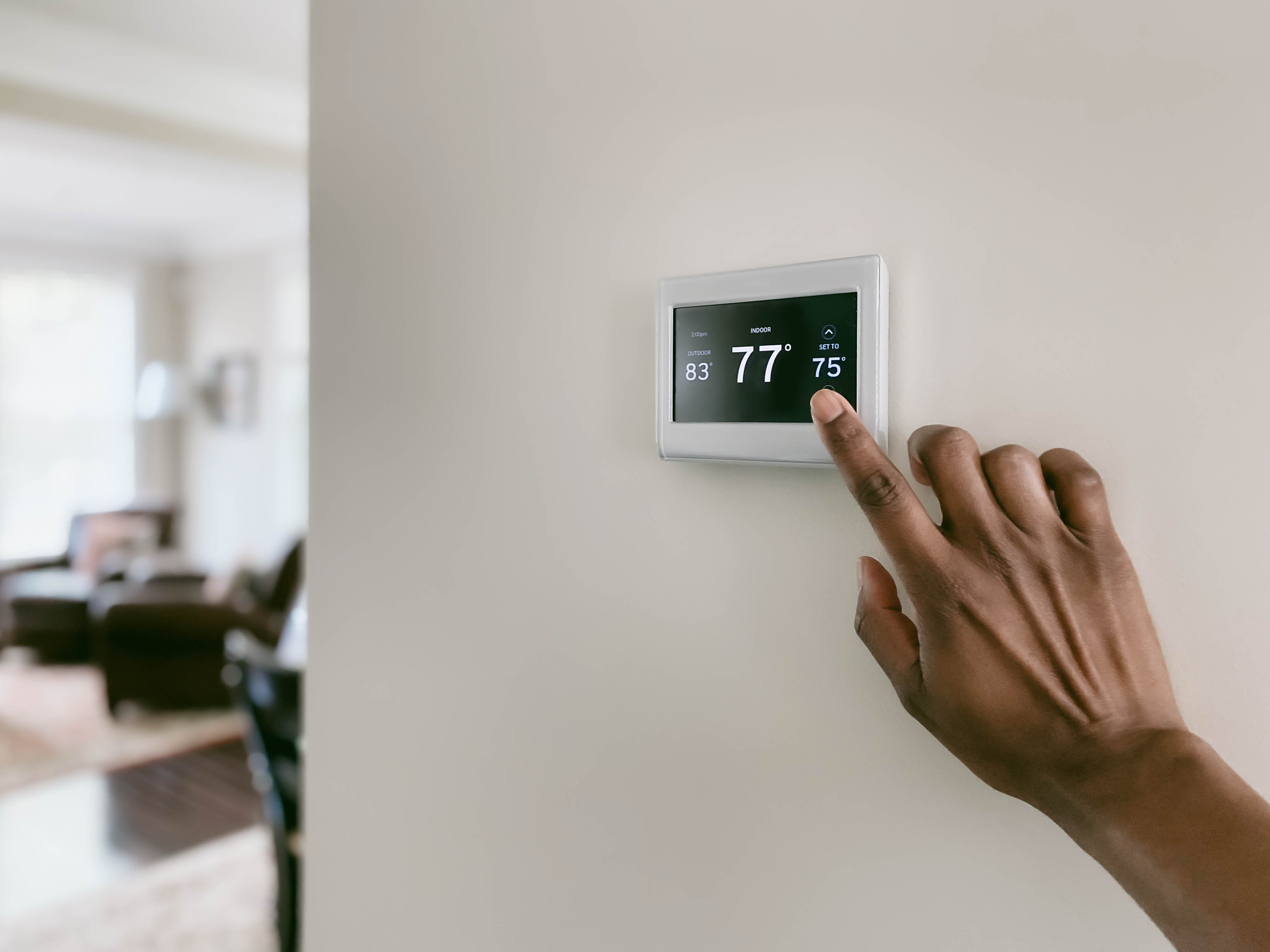
What’s in an Electric Underfloor Heating Kit?
The electric underfloor heating kit will usually have the wires, which may be attached to a mat depending on the system you have selected.
There could also be a primer to prepare the substrate so that the mat sticks to it. As well as some tape for sticking the mat or wires down.
You will also have a thermostat for controlling the system. Some systems will also have backing boards to lay the wires onto.
How Hot Does Electric Underfloor Heating Get?
The heat in the floor of an underfloor heating system will be measured as the surface temperature of the floor.
If using a hard surface such as ceramic tiles then the surface temperature will be around 29°C.
Any softer floor cover such as engineered wood or specialist flooring coverings will only reach around 27°C so as to not cause cracks and discolouration.
This element needs to be designed in so it is important to know what the surface materials will be fairly early on.
What Flooring Works With Electric Underfloor Heating?
Any flooring that insulates the heat from getting to the room space is not suitable and also any floor surface that has heat sensitive adhesives or pigments should be avoided, or at the very least managed.
The general rule of thumb with any underfloor heating is the harder the surface of the floor finish the better.
Therefore polished concrete and ceramic tiles are great types of flooring to go with electric underfloor heating. Plus engineered floorboards are also ok (do not use solid wood as it will shrink as it dries in the heat).
Carpets can be a bit tricky. The tog value must be less than 2.5 for carpets to work at all but they can also be a great breeding ground for house mites and dust mites with the long periods of background heat.
Electric underfloor heating can be installed on suspended floors and timber floors but a special backing board must be used so that the wires do not burn any of the timbers in the floor and any movement does not damage the wires.
David is a renewables and ventilation installer, with over 35 years experience, and is a long-standing contributor to Homebuilding and Renovating magazine. He is a member of the Gas Safe Register, has a Masters degree in Sustainable Architecture, and is an authority in sustainable building and energy efficiency, with extensive knowledge in building fabrics, heat recovery ventilation, renewables, and also conventional heating systems. He is also a speaker at the Homebuilding & Renovating Show.
Passionate about healthy, efficient homes, he is director of Heat and Energy Ltd. He works with architects, builders, self builders and renovators, and designs and project manages the installation of ventilation and heating systems to achieve the most energy efficient and cost effective outcome for every home.

